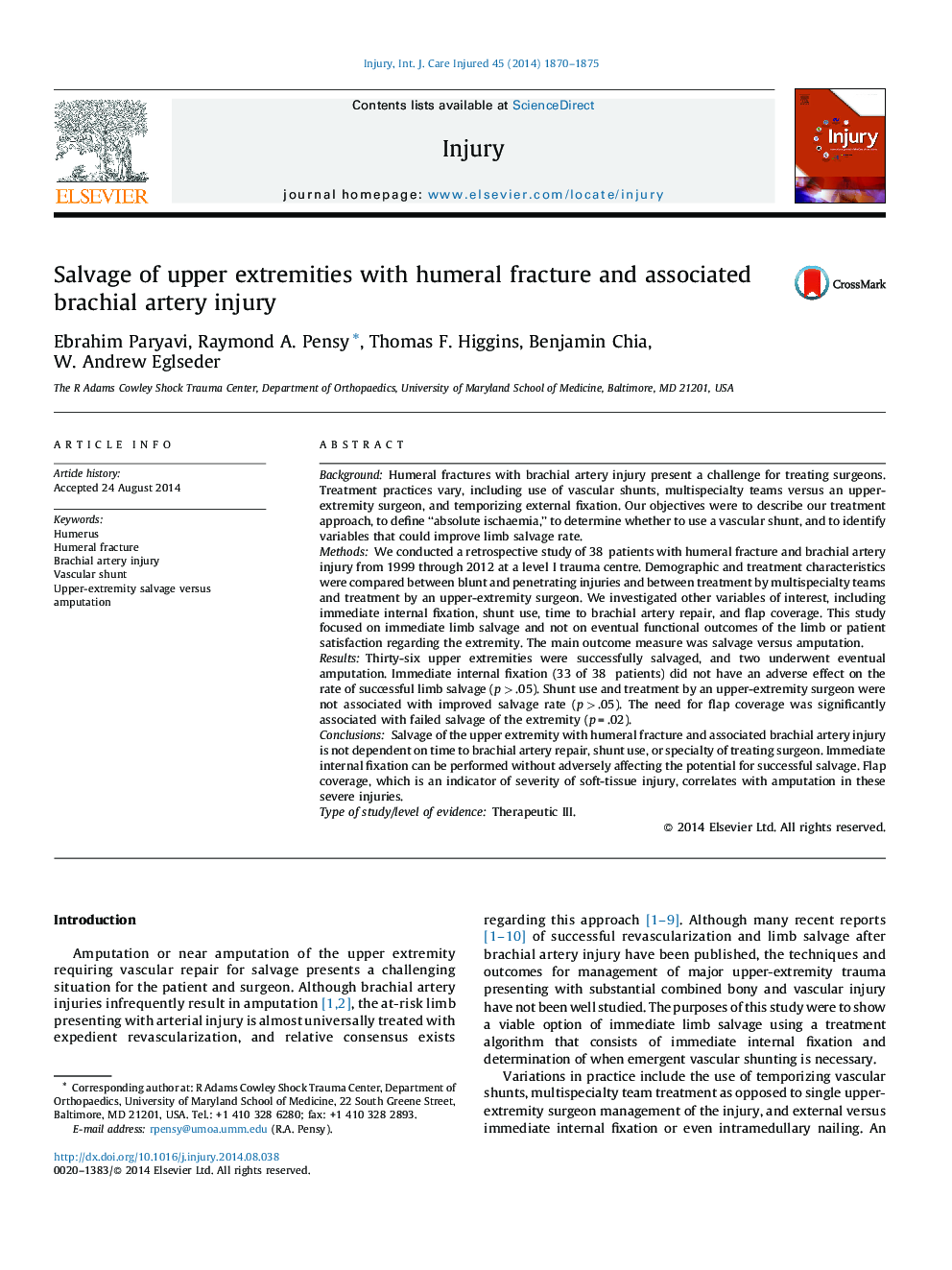| Article ID | Journal | Published Year | Pages | File Type |
|---|---|---|---|---|
| 6083681 | Injury | 2014 | 6 Pages |
BackgroundHumeral fractures with brachial artery injury present a challenge for treating surgeons. Treatment practices vary, including use of vascular shunts, multispecialty teams versus an upper-extremity surgeon, and temporizing external fixation. Our objectives were to describe our treatment approach, to define “absolute ischaemia,” to determine whether to use a vascular shunt, and to identify variables that could improve limb salvage rate.MethodsWe conducted a retrospective study of 38 patients with humeral fracture and brachial artery injury from 1999 through 2012 at a level I trauma centre. Demographic and treatment characteristics were compared between blunt and penetrating injuries and between treatment by multispecialty teams and treatment by an upper-extremity surgeon. We investigated other variables of interest, including immediate internal fixation, shunt use, time to brachial artery repair, and flap coverage. This study focused on immediate limb salvage and not on eventual functional outcomes of the limb or patient satisfaction regarding the extremity. The main outcome measure was salvage versus amputation.ResultsThirty-six upper extremities were successfully salvaged, and two underwent eventual amputation. Immediate internal fixation (33 of 38 patients) did not have an adverse effect on the rate of successful limb salvage (p > .05). Shunt use and treatment by an upper-extremity surgeon were not associated with improved salvage rate (p > .05). The need for flap coverage was significantly associated with failed salvage of the extremity (p = .02).ConclusionsSalvage of the upper extremity with humeral fracture and associated brachial artery injury is not dependent on time to brachial artery repair, shunt use, or specialty of treating surgeon. Immediate internal fixation can be performed without adversely affecting the potential for successful salvage. Flap coverage, which is an indicator of severity of soft-tissue injury, correlates with amputation in these severe injuries.Type of study/level of evidenceTherapeutic III.
